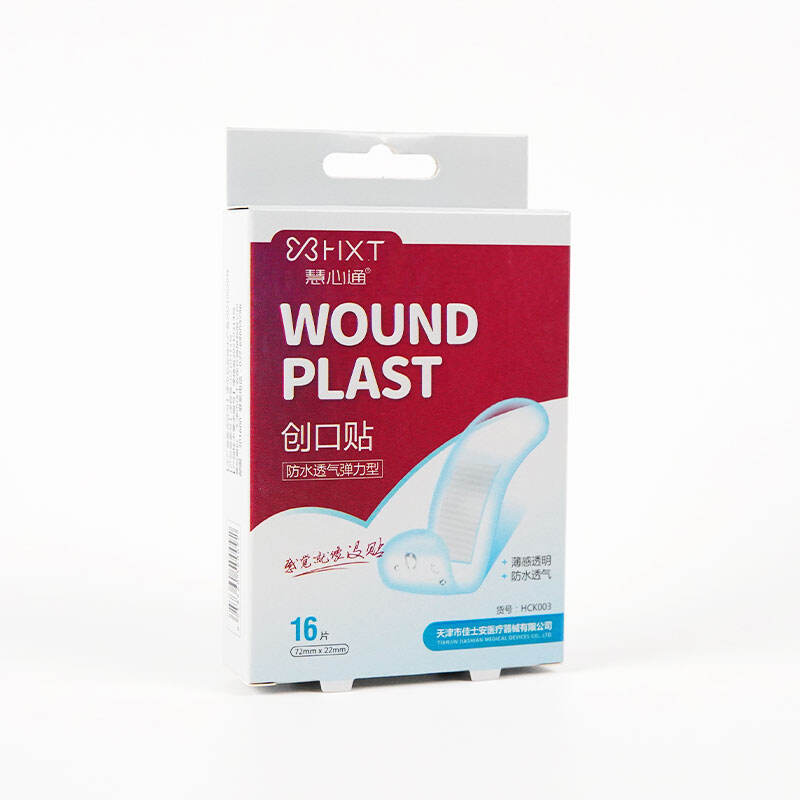In the not too distant past, one had to cover a wound with what was available in nature e.g., leaves or an animals skin. These were their bandages - materials to keep the wound clean and nobody was given any painkillers. It was not until nearly 5500 years later during the reign of ancient Egyptian civilization that people began to use bandages constructed out of plant fibers. This was significant as these bandages were more effective in treating wounds than leaves alone. It evolved into bandages which were materials such as linen or wool during the middle ages. Most of these bandages were saturated in oils and honey, both thought to facilitate faster healing.
Bandages got better and better over time. Doctors discovered they could put other drugs in a bandage, to make wounds heal quicker. They used some very interesting things on her actually including turpentine and even arsenic! These ingredients may seem weird to us now, but in the past they thought it would work as a treatment for their injuries.
The Changing Face of Injury Management In Science
Scientists today are working on advanced technologies for producing novel approaches to natural wound healing. ResearchersOfOne of the up and coming treatment concepts is known as stem cell therapy. This involves using the patients own cells, called stem cells to generate new skin and replace damaged areas This is a very thrilling news because it can allow people to recover much faster.
One new method is light therapy. Physical therapy allows for more blood flow to the injured area, which promotes healing. Increased blood flow to a wound helps deliver essential nutrients and oxygen that help the healing process. And perhaps one day, doctors can know more about your recovery process because of these cool new special bandages that could probably check how well a wound is healing!
The Next Great Advancements in Healing Technology
As such, researchers are constantly striving to devise improved methods of managing wounds. Smart Bandages One of the more novel ideas to emerge recently has been smart bandages. These futuristic bandages will know if you have an infection in your wound This way, if they spot an infection, they could release a drug to help stave it off. This is good news, as it means that treatment can be started more quickly when needed.
In addition, some new bandages use minuscule particles - nanoscale materials - and help wounds heal faster. These advanced dressings may also have antibacterial properties to prevent infection and encourage healing new skin in the wounded areas. This implies that the patients can heal faster and start to feel better soon.
The Many Types of Bandages
Sure, the good-old band-aid sure is not completely out of fashion yet, still but trust me there are countless varieties exist now to living up your need. Certain bandages are waterproof and can be worn while swimming or bathing. Some are stickier than others, which means they stay put better while silver will be added to another. It also possesses antibacterial properties, which assist in preventing wound infections.
Another strategy is to use special bandages that can minimize new scarring in the post-wound-healing period. The bandages are made to put enough pressure on plus the reduction in oxygen is meant better your pores and skin problems. Some bandages are also made from collagen gained by animals and this is a nutrient for skin that regenerate the same as possible.
The Future of Wound Care
In fact, the methods we use to care for our wounds are getting better all the time thanks to the advances made in science and technology. It can serve as new home for stem cells that help regenerate the skin, said researchers working on developing a&to=&en regenerative bandage. They are even looking at developing 3D-printed skin for burn victims which would be a game changer in wound care.
New methods for closing wounds are also being developed, like glue and gels These Ways will help in reduction of scars and healing process. This included that people would heal faster, and it will be less painful.
To end off, the evolution of bandages started out as mere coverings and has now evolved into a healing procedure. People have been attempting to dress wounds in a variety of ways throughout history, yet with the help of science and technology on our side, we are closer than ever to getting it right. From bandages that can detect infections to regenerative medicine that helps grow new skin, the potential for healing of people should be full!

